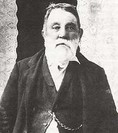(bolding added).NEWS-FEDERAL, 2008TAXDAY, (Oct. 27, 2008), Item #I.8, IRS Matching State Tax Data Against Federal Information
IRS examiners are sifting through state tax data to locate federal non-filers and under-reported income. The IRS posted a memorandum on its website on October 22 describing how agents will use the State Reverse File Match Initiative (SRFMI).
[ . . . ]
Under the SRMFI, the IRS matches state income tax filing information against federal data to identify discrepancies, including potential non-filers and taxpayers under-reporting income. [ . . . ] In June, IRS Commissioner Douglas H. Shulman said that 15 states are sending non-filer and under-reported data to the IRS in 2008. An IRS spokesperson told CCH that the Service anticipates a "significant increase" for 2009.
Monica L. Baker, examination director, IRS Small Business/Self-Employed (SB/SE) Division, explained in the September 19, 2008, memorandum that states are sending four tax data extracts to the IRS: (1) individual; (2) corporate; (3) sales; and (4) withholding. The results for each data extract will be placed in one of three categories (compliant, under-reported and non-filer). "Returns demonstrating material amounts of under-reported income or no record of filing during the matching process will be case built and sent to the field," Baker explained.
[ . . . ]By George L. Yaksick, Jr., CCH News Staff
Here's an excerpt from the referenced document:
September 19, 2008
Control Number: SBSE-04-0908-043
Expiration Date: September 17, 2009
Impacted IRM(s): 4.10.4, and 4.1.1
MEMORANDUM FOR EXAMINATION AREA DIRECTORS
FROM: Monica L. Baker /s/ Donna C. Hansberry
Director, SBSE Examination
SUBJECT: Interim Guidance for State Reverse File Match Initiative (SRFMI) Program
This memorandum provides interim guidance on the State Reverse File Match Initiative (SRFMI) program cases. The IRS has committed to TIGTA, Treasury, and the Senate Finance Committee to explore the matching of state filings against IRS return data.
For decades, state revenue departments have used federal return filing information to address non-filing and underreporting. There are opportunities for IRS to improve compliance by reversing this process. States will send the IRS four data extracts: individual, corporate, sales, and withholding. For each data extract, the results from matching state information to IRS return data will be placed into three categories: compliant, underreported, and non-filer. Returns demonstrating material amounts of underreported income or no record of filing during the matching process will be case built and sent to the field.
#*****#
Examiners can use the income reported on the state tax return to produce a federal tax examination report. It has been held that positions taken in a tax return signed by a taxpayer may be treated as admissions. See Waring v. Commissioner, 412 F.2d 800, 801 (3 rd Cir. 1969); Lare v. Commissioner, 62 T.C. 739, 750 (1974); Kaltreider v. Commissioner, 28 T.C. 120, 125 -126 (1957). As stated in Crigler v. Commissioner, T.C. Memo. 2003-93, a taxpayer "cannot ...disavow ... returns without cogent proof that they are incorrect." Evidence obtained through the taxpayer's own admission on a state income tax return signed under penalties of perjury is as reliable as evidence from third parties, and perhaps more so if the taxpayer is unable to successfully refute the information contained in the state return. If the taxpayer establishes during the course of the examination that the state information is incorrect, the examiner will adjust their report accordingly.
All examiners will treat these cases like any other case; applying normal audit procedures, considering potential fraud when warranted, and using his or her judgment to determine the scope of the examination. There are 37 states that start with federal adjusted gross income (AGI) or federal taxable income (TXI). State supplied federal AGI or federal TXI reported by a taxpayer on his or her state return provides sufficient basis for determining a federal deficiency for that taxpayer. A deficiency determination can be made that satisfies IRC § 6212(a). Where Information Returns Processing (IRP) data is available, examiners should use this as an additional source for comparison.
For federal tax non-filers, the normal substitute for return procedures will be applied, including separate reports for married filing joint state return data. The examiner will need to apportion the appropriate amount of income to each spouse. See IRM 25.18.2, Income Reporting Considerations of Community Property, for allocation of income in community property states. For non-community property states, the examiner should not simply place all of the income on both spouse's returns. The examiner should first check the state tax return for information that would provide a basis for allocating the income reported. Second, the examiner should cross-reference the information on the state return with any other information that may be available, such as information returns (W-2, 1099, etc.). If the examiner has sufficient information to determine the amount of income per spouse, he or she can prepare a report.
If the examiner does not have sufficient information to allocate income, based on the steps taken above, the examiner should try to contact each spouse and attempt to obtain information on how much income should be reported for them prior to issuing a report. If the taxpayer(s) are non-responsive or uncooperative the examiner can then treat this as a whipsaw issue and place the full income on each taxpayer's return. The latter will be done only when the steps, outline above, provide insufficient information on how to allocate income.
[ . . . ]
IRM Sections 4.10.4.3, Minimum requirements for examination of income exceptions, 4.1.1 Fed-State section, will be updated to reflect the interim guidance as outlined in this memo on or before September 17, 2009.
[ . . . ]
